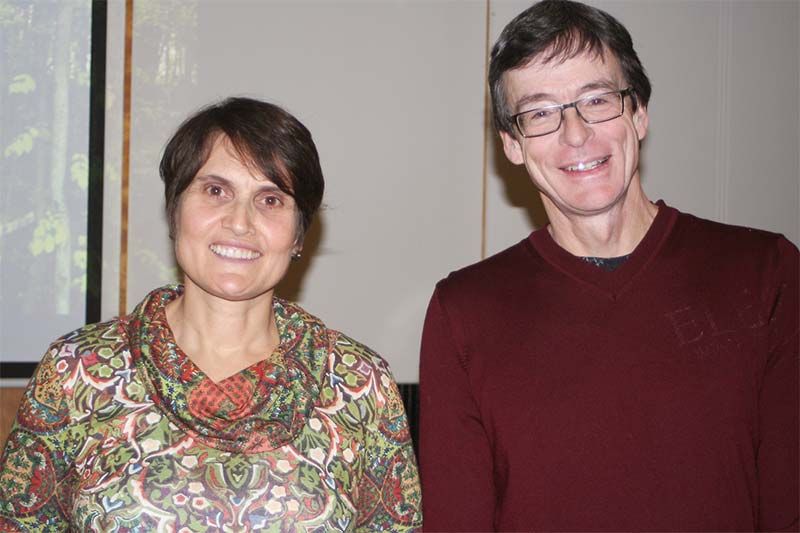Jeff Green | Jan 18, 2017
Patricia Stirbys and Peter Croal made a presentation in support of the concept of a National Healing Forest last Thursday night (January 12) at the Table in Perth.
The idea came to Croal while he was on the Walk for Truth and Reconciliation in May of 2015, and he asked Stirbys to partner with him to develop it. The initial concept was to see a National Healing Forest established with 6,000 trees to recognise the 6,000 First Nation, Inuit, and Metis children who were lost while attending residential schools, and 1,200 trees to represent the 1,200 plus murdered and missing aboriginal women and girls in Canada.
They approached Charlene Bearhead, the National Centre for Truth and Reconciliation (NCTR) Education Lead with the idea, and from there it took off. Instead of a single site the National Healing Forest is now envisioned as a network of sites all across the country and individuals and groups are invited to take on the project in any way they see fit.
Plans are being developed for a plaque to be available for purchase to mark the locations that are part of the national forest, and a website with a map marking all the locations that are open to the public is being contemplated as well.
It was this idea of community participation that brought Stirbys and Croal to Perth.
After they set the scene with a powerpoint presentation on the work of the Truth and Reconciliation Commission and the pain that it laid bare, they talked in general terms about the Healing Forest project.
Then the meeting was opened up.
“What we want to know from you people is what do you want to do with this project. It is no longer our project, it is everyone’s project now. We release it,” said Patricia Stirby.
“It is a project for all Canadians. It would be a quite a thing if there were a necklace of forests across the country,” said Croal.
The 40 or so people at the Table wasted no time taking ownership of the idea. Many said they had a special piece of land, an acre, a clump of trees, a small meadow, that they would like to designate as part of the project.
“The idea of healing extends beyond the aboriginal community, the settler community needs to heal as well. And we also need to heal the land after all that has been done,” said Mireille Lapointe, a teacher at St. John Catholic High School who lives near Westport and is a member of the Ardoch Algonquin First Nation community.
There was also talk of approaching the Perth town Council, MPP Hillier, or MP Reid to seek funding or the use of public land for the project.
“I like to see this primarily as a community project, as a project that we all take responsibility for, and not something that we turn over to the government to take on, not something that ends up being a photo-op or a series of photo-ops,” said Stirby.
The meeting in Perth was the first public meeting about the project, but there is already a forest in place, in Edmonton on the banks of the North Saskatchewan river. A group called RISE (Recognition in Solidarity Edmonton) placed paper hearts in 1,000 trees along the river, each with a message of reconciliation. While the paper hearts will not last, RISE is thinking about a more permanent commemoration.
Stirbys and Croal are headed to Saskatchewan this week to work with a group of high school students on a visual image that they hope to use as the common element in the plaques that will be made available to participants in the National Healing Forest Project.
As for the National Healing Forest, it is being housed on a virtual basis by the NCTR website. To access information, go to NCTR.ca, click on the Education tab and look for National Healing Forest in the middle right hand portion of the page.
More Stories
- Province clarifies stance - Says Private Well Water Testing Will Continue
- Frontenac County Stays Internal for CAO - Appoints Kevin Farrell
- Addington Highlands Tax Bill Going Up 6.93%
- Perth Road United Church Donation to The Grace Centre
- 21 Years Of Dump Life Left At South Frontenac Waste Site
- Eclipse 2024 – Once In A Lifetime
- National Tourism Week
- NeLL Spring Open House and Anniversary Concert
- 25 years at Bishop Lake Outdoor Centre
- Grounds Contracts Down, Custodial Contracts Up In Central Frontenac

